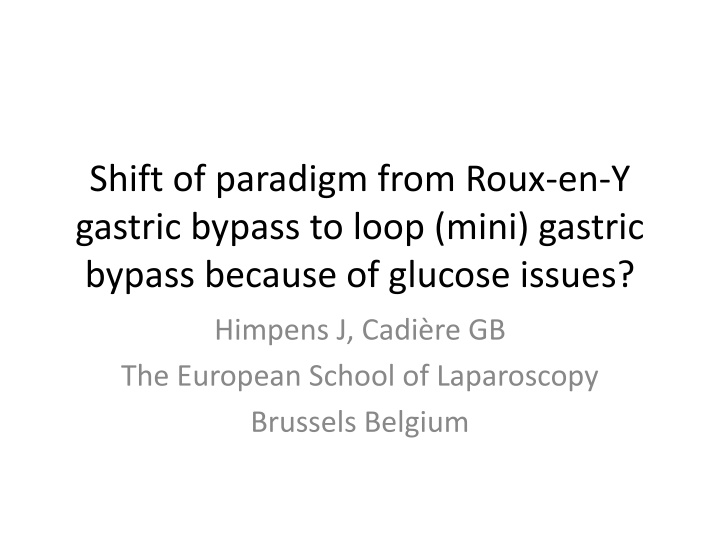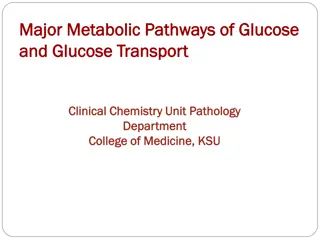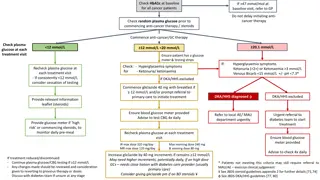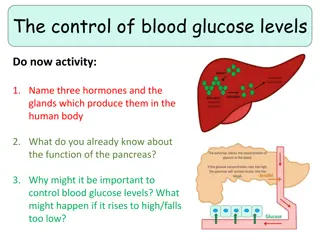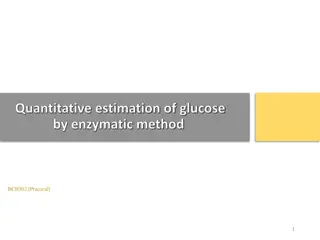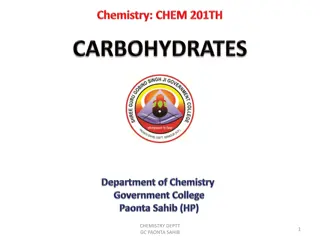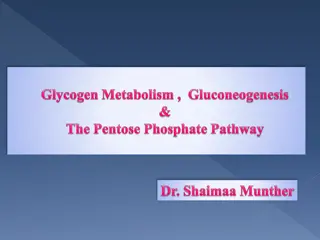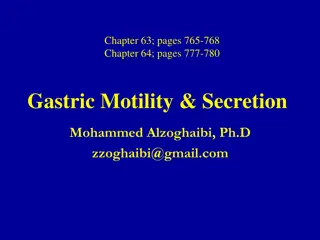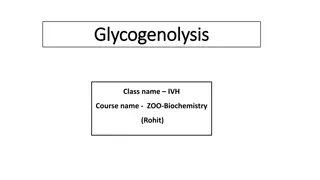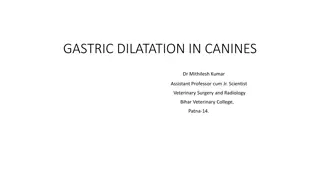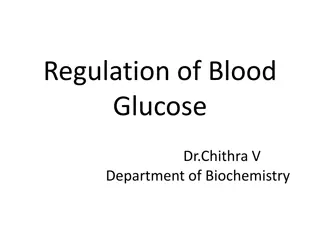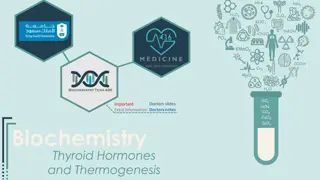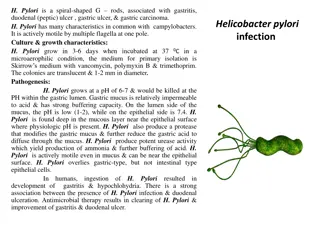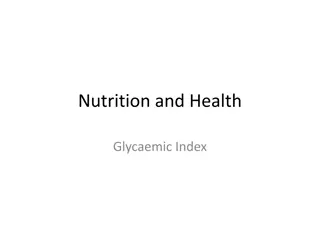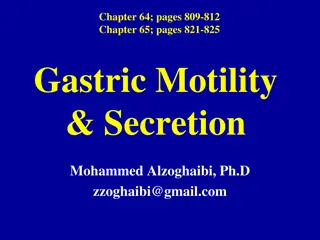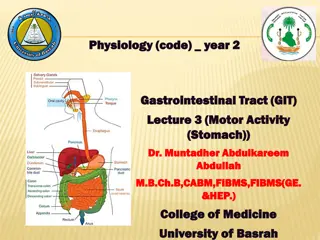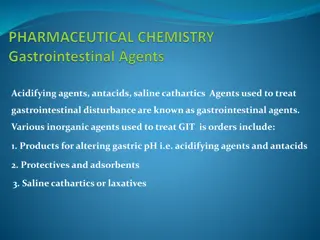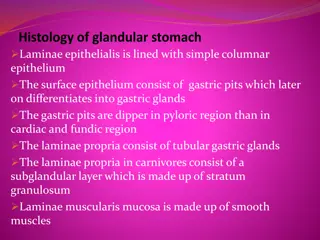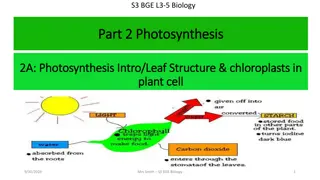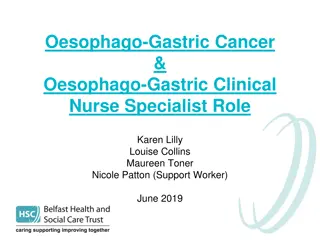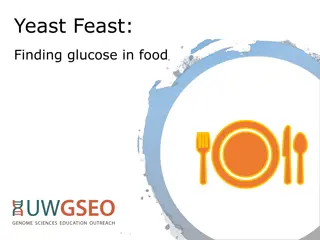Shifting Paradigm to Mini Gastric Bypass for Glucose Issues
In the context of Roux-en-Y gastric bypass and loop (mini) gastric bypass, the focus is on addressing glucose issues, particularly in patients with morbid obesity and Type 2 Diabetes Mellitus. The mechanism of action involving insulin secretion modulation by incretins, anti-incretins, and the potential impact on insulin resistance is explored. The shift towards mini gastric bypass is discussed in relation to glucose metabolism regulation and weight loss effects.
Download Presentation

Please find below an Image/Link to download the presentation.
The content on the website is provided AS IS for your information and personal use only. It may not be sold, licensed, or shared on other websites without obtaining consent from the author.If you encounter any issues during the download, it is possible that the publisher has removed the file from their server.
You are allowed to download the files provided on this website for personal or commercial use, subject to the condition that they are used lawfully. All files are the property of their respective owners.
The content on the website is provided AS IS for your information and personal use only. It may not be sold, licensed, or shared on other websites without obtaining consent from the author.
E N D
Presentation Transcript
Shift of paradigm from Roux-en-Y gastric bypass to loop (mini) gastric bypass because of glucose issues? Himpens J, Cadi re GB The European School of Laparoscopy Brussels Belgium
DISCLOSURES of Jacques Himpens Consultant with Ethicon Work shop organizer for GORE Storz technical support
MORBID OBESITY METABOLIC SYNDROME DIABETES II INSULIN RESISTANCE (C-peptide ) Morbidly obese patient needs more insulin than non obese in order to maintain eu- glycemic state When insulin secretion insufficient -> T2DM (HbA1c>6.0%, which means the patient is mostly hyperglycemic)
INSULIN AND RYGB Insulin secretion modulated by the incretins GLP1, PYY, GIP
INSULIN AND RYGB Insulin secretion modulated by the incretins GLP1, PYY, GIP Insulin secretion POSSIBLY regulated by ANTI-INCRETINS produced in duodenum and proximal jejunum (foregut hypothesis) (Rubino)
INSULIN AND RYGB Insulin secretion modulated by the incretins GLP1, PYY, GIP Insulin secretion POSSIBLY regulated by ANTI-INCRETINS produced in duodenum and proximal jejunum (foregut hypothesis) (Rubino) Insulin secretion triggered by fast delivery of food stuffs in distal small bowel (hindgut hypothesis)
INSULIN AND RYGB Insulin secretion POSSIBLY regulated by ANTI-INCRETINS produced in duodenum and proximal jejunum (foregut hypothesis) (Rubino) Insulin secretion triggered by fast delivery of food stuffs in distal small bowel (hindgut hypothesis) After bypass incretins secretion increased GLP1, PYY, insulin secretion (immediate effect) insulin resistance (weight loss induced) DISAPPEARS (with time) (Campos, 2010)
INSULIN AND RYGB Insulin secretion regulated by ANTI-INCRETINS produced in duodenum and proximal jejunum (foregut hypothesis) (Rubino) After bypass incretins secretion increased GLP&, PYY, insulin secretion After bypass insulin resistance DISAPPEARS (with time) (Marcos) If sufficient insulin available (beta cell function), diabetes remission
INSULIN AND RYGB Insulin secretion regulated by ANTI-INCRETINS produced in duodenum and proximal jejunum (foregut hypothesis) (Rubino) After bypass incretins secretion increased GLP&, PYY, insulin secretion After bypass insulin resistance DISAPPEARS (with time) (Marcos) If sufficient insulin available (beta cell function), diabetes remission Lee WJ et al. Obes Surg. 2012 Feb;22(2):293-8. C-peptide predicts the remission of type 2 diabetes after bariatric surgery.
INSULIN RESISTANCE After bypass, and because of previous insulin resistance which is now abolished: When sugar is taken in orally, relatively too much insulin is produced (pancreatic memory) tendency towards hypoglycemia
Patti ME et al. (Harvard) Diabetologia 2010 Nov; 53(11): 2276-9 Hypoglycemia post gastric bypass = diabetes remission in the extreme
DiGiorgi M, et al Columbia University Center Surg Obes Relat Dis. 2010 May-Jun;6(3):249-53. Review of 42 RYGB patients with T2DM and >or=3 years of follow-up T2DM resolved or improved in all patients (64% and 36%, resp.)
DiGiorgi M, et al Columbia University Center Surg Obes Relat Dis. 2010 May-Jun;6(3):249-53. Review of 42 RYGB patients with T2DM and >or=3 years of follow-up T2DM initially resolved or improved in all patients (64% and 36%, resp.) 24% (10)recurred or worsened after 3 yrs
DiGiorgi M, et al Columbia University Center Surg Obes Relat Dis. 2010 May-Jun;6(3):249-53. Review of 42 RYGB patients with T2DM and >or=3 years of follow-up T2DM resolved or improved in all patients (64% and 36%, resp.) 24% (10)recurred or worsened. The patients with recurrence or worsening: Lower preoperative BMI More regain of lost weight Greater weight loss failure rate Greater postoperative glucose levels
Chikungowo SM et al. Surg Obes Relat Dis. 2010 May-Jun;6(3):254-9. 177 patients with T2DM Roux-en-Y gastric bypass 5-year follow-up. Early remission of T2DM occurred in 89% of patients
Chikungowo SM et al. Surg Obes Relat Dis. 2010 May-Jun;6(3):254-9. 177 patients with T2DM Roux-en-Y gastric bypass 5-year follow-up. Early remission of T2DM occurred in 89% of patients T2DM recurred in 43.1%. Durable remission correlated most closely with an early disease stage at gastric bypass.
LRYGB at long-term (>6 years): BMI Obes Surg 2012;22(10)
LRYGB at long-term (>6 years):T2DM Type 2 Diabetes (T2DM): incidence at 0 years T2DM Normoglycemia N=77 Obes Surg 2012:22(10)
LRYGB at long-term (>6 years): Type 2 Diabetes (T2DM): incidence at 9 years T2DM Remission/ Improvement New onset T2DM Normoglycemia Hypoglycemia Obes Surg 2012:22(10) N=77
HOW TO EXPLAIN THIS CONDITION ?
Absorption and breakdown of sugars, NOT of fat
Absorption and breakdown of sugars, NOT of fat TRIGGER OF INCRETIN SECRETION???
Absorption and breakdown of sugars, NOT of fat: BILE SALTS IMBALANCE (Leroux)
Absorption and breakdown of sugars, NOT of fat: BILE SALTS IMBALANCE (Leroux) Fat absorption (bile salts)
Absorption and breakdown of sugars, NOT of fat: BILE SALTS IMBALANCE (Leroux) Fat absorption (bile salts): TRIGGER OF INCRETIN SECRETION?
HOW MAY WE AVOID THE BILE ACID IMBALANCE?
TO AVOID BILE SALTS IMBALANCE IN RYGB IT MIGHT BE INDICATED TO MAKE ALIMENTARY LIMB AS SHORT AS POSSIBLE
STOMACH POUCH ANASTOMOSIS SCHEMATIC OF A ROUX-EN-Y BYPASS ALIMENTARY LIMB (Jejunum) NO BILE! COMMON LIMB BILIARY LIMB
THE NEW BYPASS STOMACH POUCH ANASTOMOSIS ALIMENTARY LIMB NO BILE! BILIARY LIMB
THE NEW BYPASS STOMACH POUCH ANASTOMOSIS ALIMENTARY LIMB NO BILE! ALIMENTARY LIMB REDUCED TO ZERO BILIARY LIMB
THE NEW BYPASS STOMACH POUCH BILIARY LIMB COMMON LIMB ALIMENTARY LIMB REDUCED TO ZERO: Mix of food stuffs with bile!
Mg/dl RYGB 250 200 150 RYGB 100 50 0 0' 30' 60' 90" 120' 150' 180' Progression of plasma glucose after oral glucose challenge Of 50 grams, RYGB 2001 Female, 63 years, BMI= 22 kg/m , non-diabetic
RYGB vs Gastrostomy Mg/dl 250 200 150 Mc Laughlin T et al. J Clin Metab 2010;95(4) Control RYGB 100 50 0 0' 30' 60' 90" 120' 150' 180' Progression of plasma glucose after oral glucose challenge Of 50 grams. Control = gastrostomy (2011) Female, 63 years, BMI= 22 kg/m , non-diabetic
Gastrostomy vs Minibypass Mg/dl 180 160 140 120 100 Control 80 Mini GB 60 40 20 0 0' 30' 60' 90" 120' 150' 180' Progression of plasma glucose after oral glucose challenge Of 50 grams. Control = gastrostomy (2011) Female, 63 years, BMI= 22 kg/m , non-diabetic
RYGB vs Gastrostomy vs Minibypass 250 Mg/dl 200 150 Control RYGB 100 Mini GB 50 0 0' 30' 60' 90" 120' 150' 180' Progression of plasma glucose after oral glucose challenge Of 50 grams. Control = gastrostomy Comparison of status with RYGB vs MGB Female, 63 years, BMI= 22 kg/m , non-diabetic
Lee WJ et al. Obes Surg. 2012 Dec;22(12):1827-34. Laparoscopic Roux-en-Y versus mini-gastric bypass for the treatment of morbid obesity: a 10-year experience. LMGBP can be regarded as a simpler and safer alternative to LRYGB with similar efficacy at a 10-year experience.
Lee WJ,et al Arch Surg. 2011 Feb;146(2):143-8 Gastric bypass vs sleeve gastrectomy for type 2 diabetes mellitus: a randomized controlled trial. Patients after MINI gastric bypass were more likely to achieve remission of T2DM than after sleeve
CONCLUSIONS: -While effective for glucose control, RYGB will not prevent recurrent/ de novo T2DM in a number of patients -T2DM recurrence after RYGB is NOT directly linked with weight regain
CONCLUSIONS: -While effective for glucose control, RYGB will not prevent recurrence of T2DM or de novo appearance of T2DM in a number of patients
CONCLUSIONS: -While effective for glucose control, RYGB will not prevent recurrence of T2DM in a number of patients -T2DM recurrence after RYGB is NOT directly linked with weight regain -T2DM recurrence = pancreas cell exhaustion?
CONCLUSIONS: -While effective for glucose control, RYGB will not prevent recurrence of T2DM in a number of patients -T2DM recurrence after RYGB is NOT directly linked with weight regain -T2DM recurrence = pancreas exhaustion? -Can the Mini bypass prevent cell exhaustion?
PARADIGM SHIFT AWAY FROM RYGB AND LAGB? % of all procedures 70 60 50 40 Bypass Sleeve 30 Band 20 10 0 2003 2008 2011 Evolution in the world of relative frequency of LRYGB, LSG and LAGB (in % of total procedures) Buchwald H, Oien DM Obes Surg 2013 Jan 22
FASTING INSULIN PRE- VERSUS POST OLGB Fasting Plasma insulin in non-diabetic patients submitted to OLGB -preoperative: ch1 (median + IQR) BMI 39.9 (2.5) -3 years postoperative: ch2 (mean + SD) BMI 24.5 (3.2) Consecutive patients, N=14 Vertical axis: U/ml P<0.001, Wilcoxon Validated Qtest Dixon
PLASMA INSULIN DURING OGTT 3 YEARS AFTER OLGB Progression of plasma insulin during OGTT (50 grams of glucose). Values in u/ml. Values are mean + SD when normally distributed or median + interquartile range when not normally distributed despiteDixon s correction Time point 1= 0, 2=30 , 3=60 , 4=90 ,5=120;, 6= 180 , 7= 240
HOMA MEAN + STANDARD DEVIATION HOMA-IR BEFORE (lot 1) and 3 YEARS AFTER OLGB. Student TTEST p<0.001 N=14
